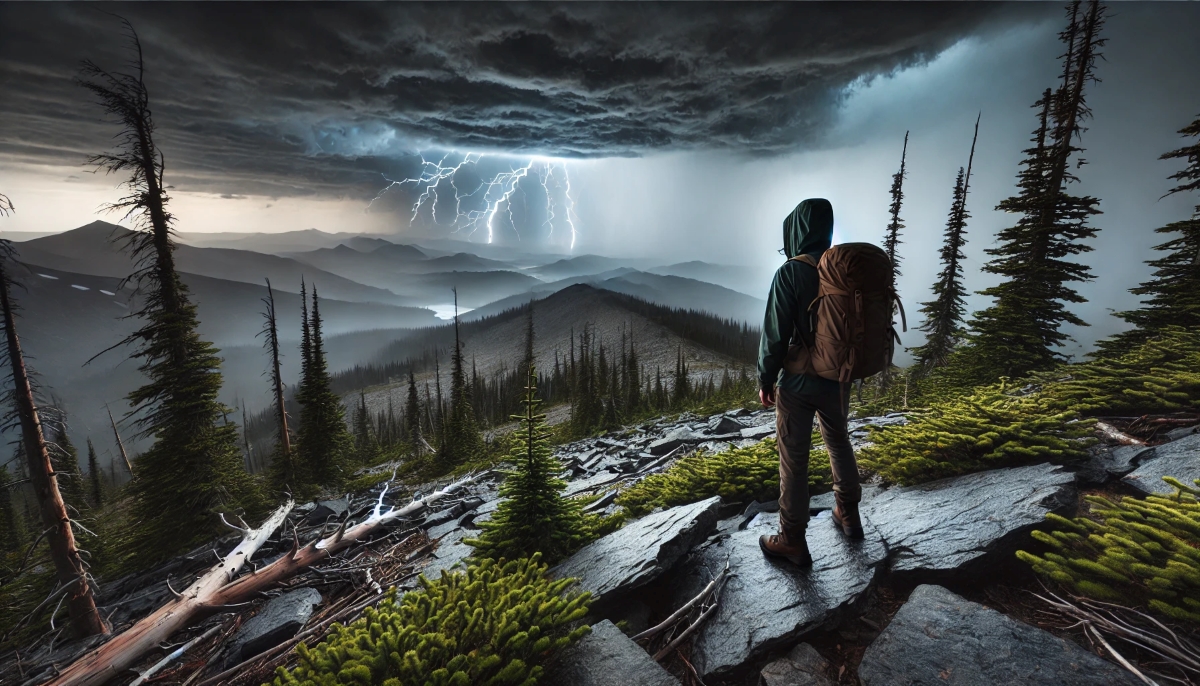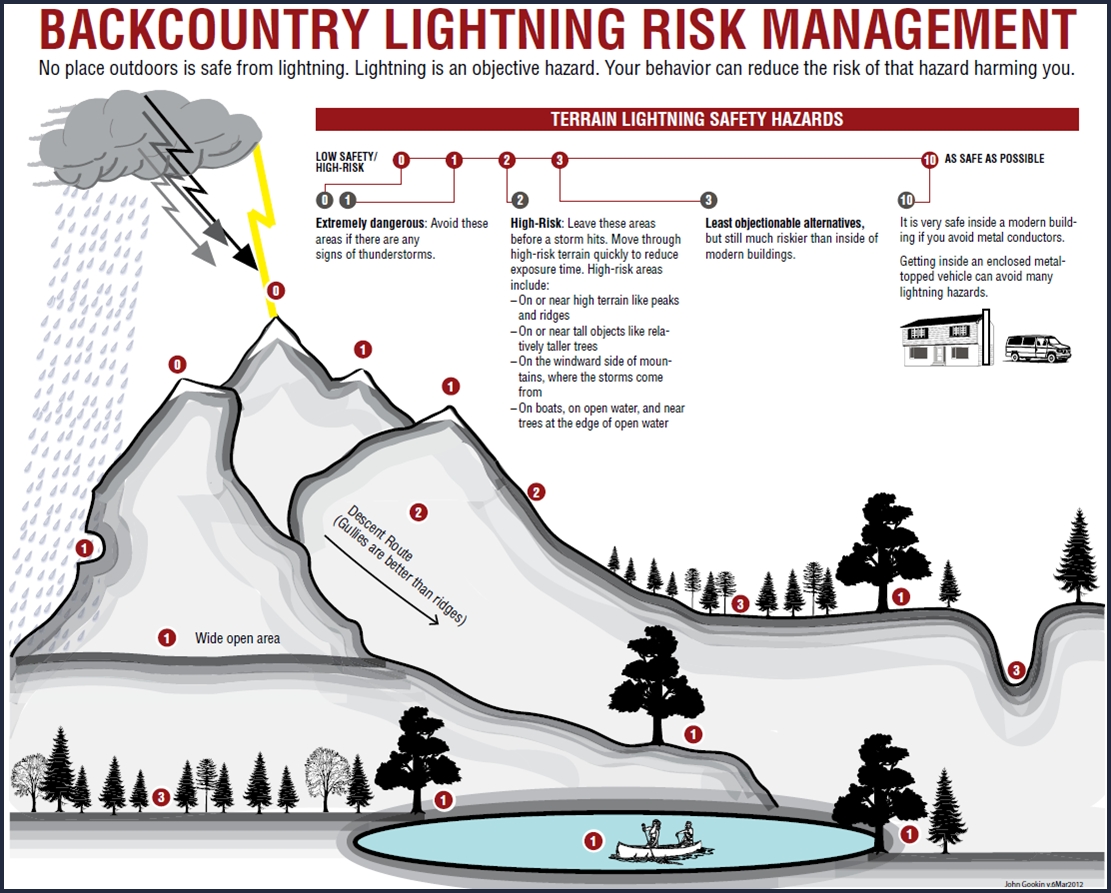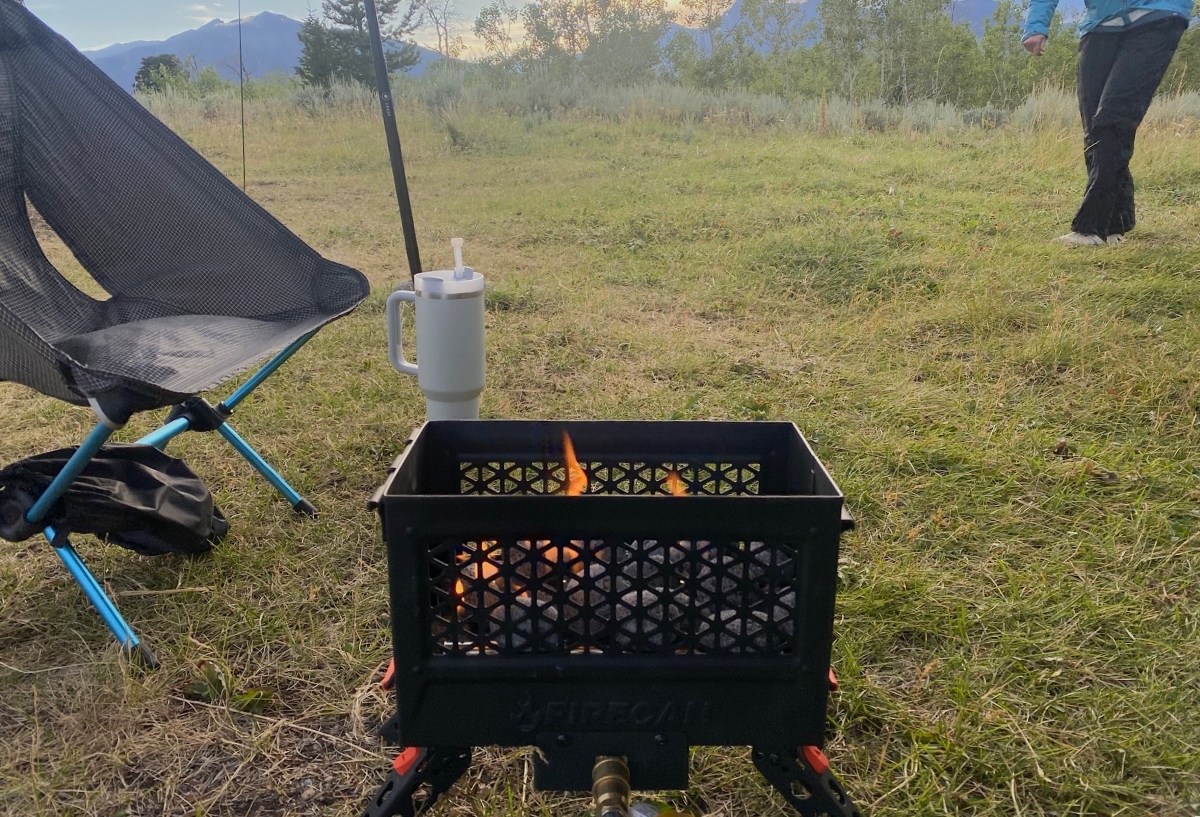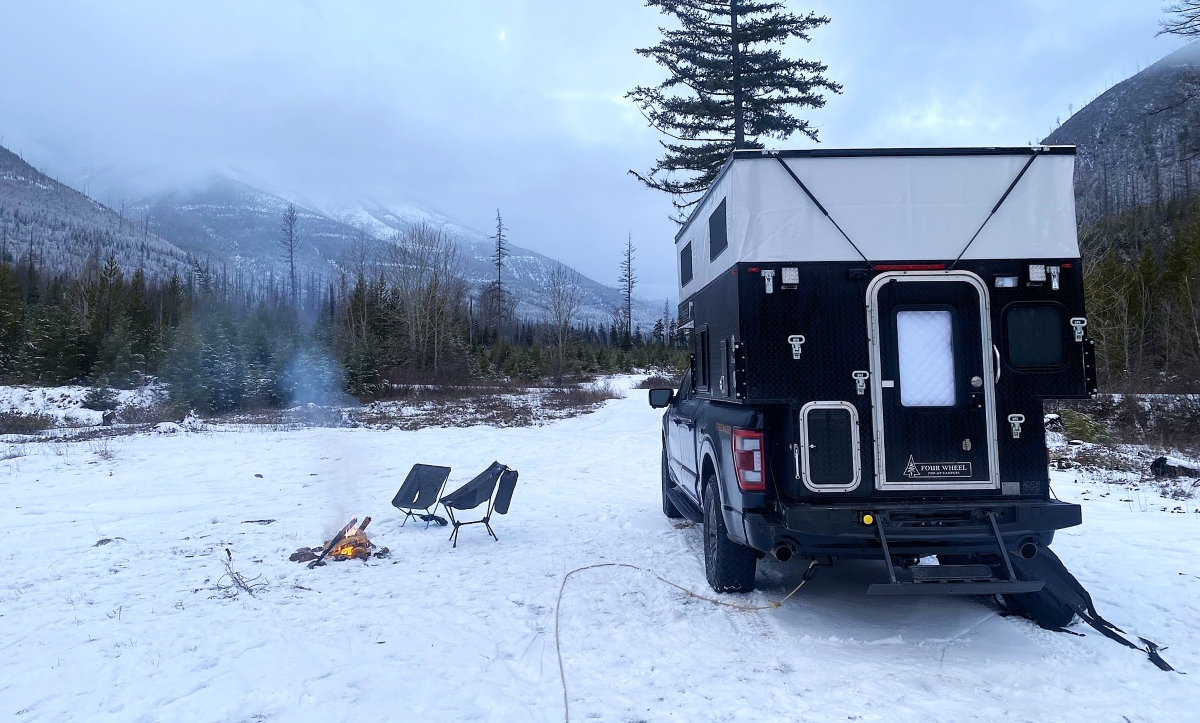
Outdoor Preparedness: Lightning Safety for Hikers
Hike long enough or go on enough backpacking trips, and you will eventually get caught in a thunderstorm. Knowing how to protect yourself from lightning is an essential hiking skill.
Understanding Lightning:
Lightning occurs when negative and positive particles in the clouds, air, and ground build up enough charge to overcome the atmosphere’s insulating properties. Ground strikes happen when a passing storm gathers a pool of positive charges from the ground. Those positive charges climb up tall objects, like buildings, trees, or telephone poles. At the same time, negative charges from the bottom of the storm descend towards the ground in what is called a stepped leader. The positive charge extends a streamer towards the descending negative charge. When the two charges connect, the resulting electrical transfer is what we see as lightning.
Types of Lightning Strikes:
Direct Strike: A direct strike occurs when a person is struck directly by lightning, becoming part of the main lightning channel. Direct strikes are most common in open fields or while hiking on mountain tops or exposed ridgelines. Although rare, they are the most deadly.
Side Flash: A side flash occurs when lightning strikes a taller object near the victim, and part of the current jumps to the victim. For example, if you’re standing near a tall tree and lightning strikes the tree, a portion of the current could jump to you.
Ground Current: When lightning strikes an object, much of the energy spreads out and travels along the ground. This is the most common type of lightning strike. For instance, if you are standing near a tree that is struck by lightning, the energy could spread into the ground and reach you. Lying flat or standing with your feet apart increases your risk of encountering ground current. To minimize risk, stand with your feet close together during a lightning storm and avoid lying down.
Conduction: Lightning can travel long distances through wires and other metal surfaces. In a conductive strike, lightning strikes an object and then travels through a connected wire or metal object that the victim is touching.
Know Before You Go:
The only 100% effective way to avoid getting struck by lightning is to avoid being caught in a lightning storm in the first place. Although it may not always seem like it, today’s weather forecasting is quite accurate. If thunderstorms are predicted, you should reconsider hiking, especially if your route includes a mountain summit or an exposed ridge where you’ll be the tallest object on the landscape.
If you’re planning to hike in the mountains, start early. Many mountain ranges, such as those in Colorado, are prone to afternoon thunderstorms. By starting early in the morning and finishing your hike around noon, you can reduce your chances of getting caught in a dangerous situation.
Getting Caught in a Storm:
As I mentioned earlier, if you hike long enough, you will eventually find yourself in a thunderstorm. When that happens, what should you do?
Step 1: Retreat to Safer Ground:
Lightning is attracted to three things: the tallest structures, isolated structures, and pointed structures. If you’re on top of a mountain, you are both the tallest and an isolated structure. Retreat to the tree line as quickly as possible. The same advice applies if you’re hiking along a ridgeline.
Step 2: Stay Away from the Tallest Structures:
Once you’ve retreated to tree cover, choose trees of similar height. Avoid standing next to the tallest tree, as it’s more likely to be struck by lightning. Standing in a grove of similarly sized trees is one of the safest places to be during a thunderstorm, though it’s worth noting that, according to the National Weather Service, even the safest place outdoors only rates as a 3 on a 1-10 safety scale.

Step 3: Spread Out:
If you’re hiking in a group, don’t huddle together. In the event of a ground strike, the entire group could be affected if you’re close to one another. Spreading out ensures that if one person is struck, others remain unharmed and can administer first aid.
Other Helpful Tips:
Understand What Constitutes a Safe Shelter:
The only truly safe shelters are substantial structures with electricity or plumbing, or vehicles with metal roofs and closed windows. Tents and trail shelters, such as those on the Appalachian Trail, offer no protection from lightning.
Know the Warning Signs:
If you hear a buzzing or cracking sound coming from metal objects like your backpack or trekking poles, or if your hair starts to stand on end, you’re in immediate danger. Ditch all metal objects and move to safer ground.
What to Do If Someone in Your Party Is Struck by Lightning:
First, assess the situation. It’s a myth that a lightning strike victim will transfer a charge to you. However, ensure that you are not putting yourself at higher risk of being struck. It does no good if you become another victim.
Once you approach the victim, check their vitals. Lightning can cause cardiac arrest. If this happens, administer CPR to help restart the victim’s heart. If you have a satellite communicator, like a Garmin InReach (which you should), hit the SOS button to call for help.
Summary:
Whenever you head into the outdoors, it’s your responsibility to be prepared for any number of situations, including the possibility of a lightning strike. While preventing yourself from being caught in a storm is the best option, knowing this basic information could save your life if you find yourself in a thunderstorm.
Matt Vittal
Matt is a software engineer living in Northwest Montana. He is an avid outdoorsman who spends his free time hiking, backpacking, camping, hunting, and fishing.





